
A raised garden bed, freshly filled up with healthy soil for the first time, is a wonderful thing. The soil mix is fluffy and porous and an absolute delight to work with. It’s more than ready to be populated with some new green friends.
But after a productive growing season or two, you’ll notice the soil sits a few inches lower in the frame and the tilth doesn’t feel quite as amazing as it initially did.
And that’s the thing with raised beds – losing soil volume and fertility is inevitable.
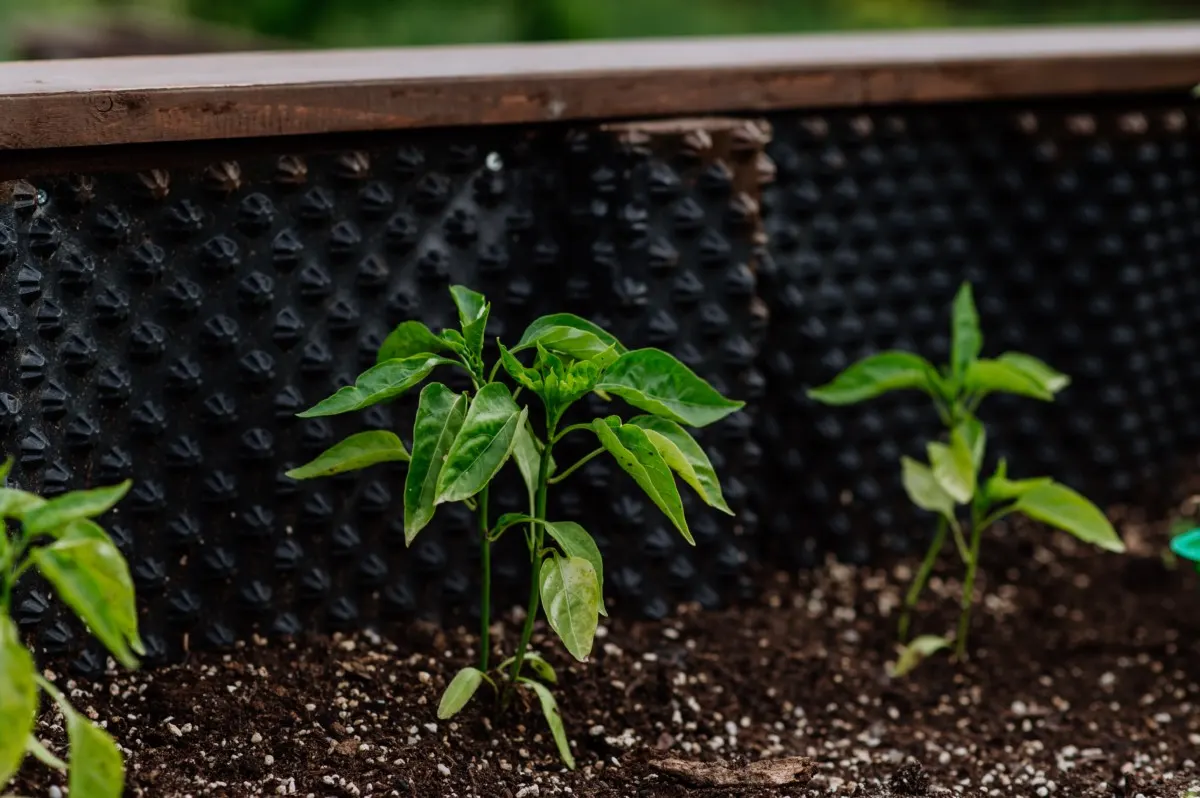
One of the benefits of growing in raised beds is complete control over the contents and quality of the soil – but this can also be one of its biggest drawbacks.
Soil depletion is less of a problem with in ground gardens, since the topsoil serves as a bedrock for all the organic amendments you throw at it. In an elevated frame, however, the once loose and airy soil will settle and shrink. The organic matter within the soil mix will continue to decompose, breaking down into smaller and smaller particles.
Because the soil microbiome in raised beds is separate and contained, you’ll need to monitor the soil health closely and top up every year with amendments to maintain soil depth.
Fall or early winter is the perfect time to tinker with your raised bed soil. But before you start tossing materials in with reckless abandon, it’s important to take a look at the soil in your raised beds right now to ascertain what it actually needs.
How to Assess Your Soil
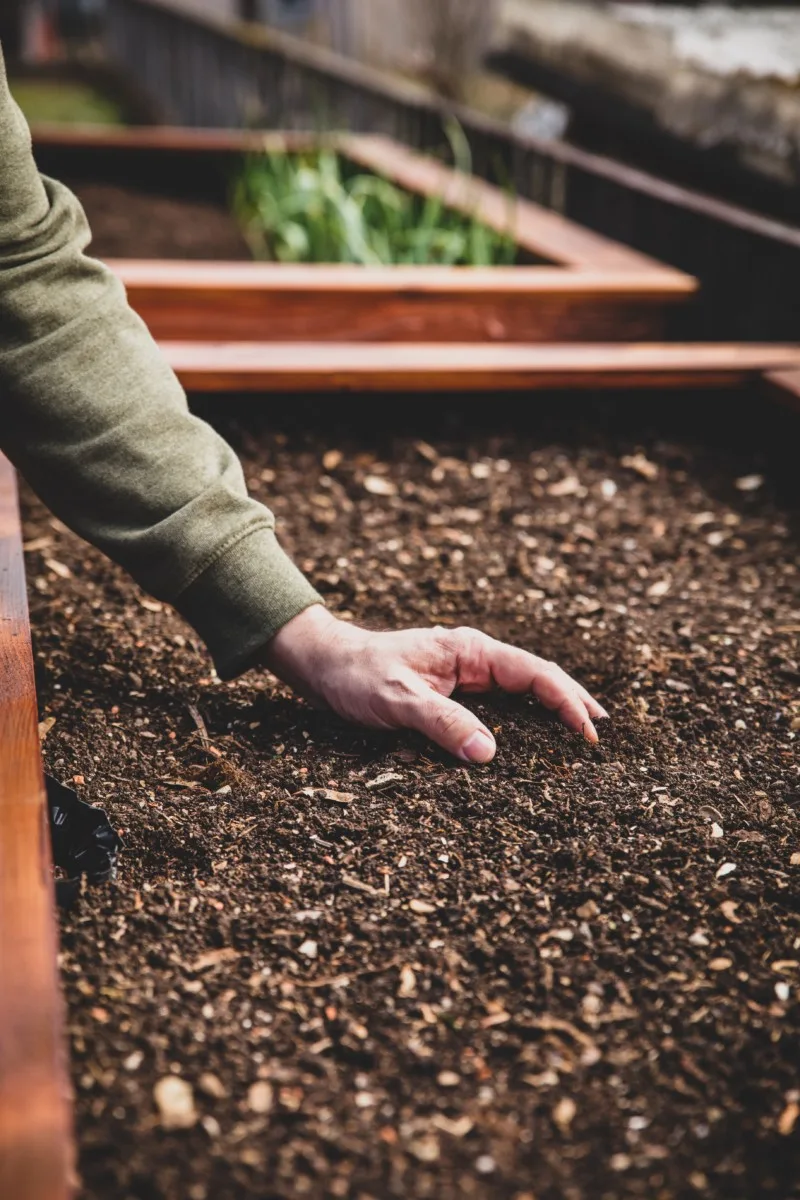
The wholly unscientific approach for assessing your soil is to use your eyes, hands, and nose to judge the tilth:
Look at the color. If it’s dark, it has a high amount of organic matter. If it’s very light, even when wet, it is low in organic matter.
Feel the texture: Grab a handful of soil and rub it between your fingers. Good tilth is a balance of mineral and organic particles – it should feel a bit gritty and slightly sticky.
Smell it: Organic matter has a rich earthy scent. Soils low in organic matter will have poor air circulation and may smell sour.
Water it: Give the raised beds a good soak and watch how it drains. If the water is absorbed into the soil within a few minutes, the organic matter is high. If the water puddles and stands, the organic matter is low.
Of course, having proper soil test done will tell you exactly what your raised bed soil needs.
Only a detailed analysis of your dirt can give you the precise values of N-P-K nutrients, micronutrients, pH, and organic matter content. The tests are inexpensive and can save a lot of money on unnecessary fertilizers and amendments. Contact your County Extension office to see about getting a soil testing kit.
7 Ways to Replenish Depleted Raised Bed Soil
1. Native Soil
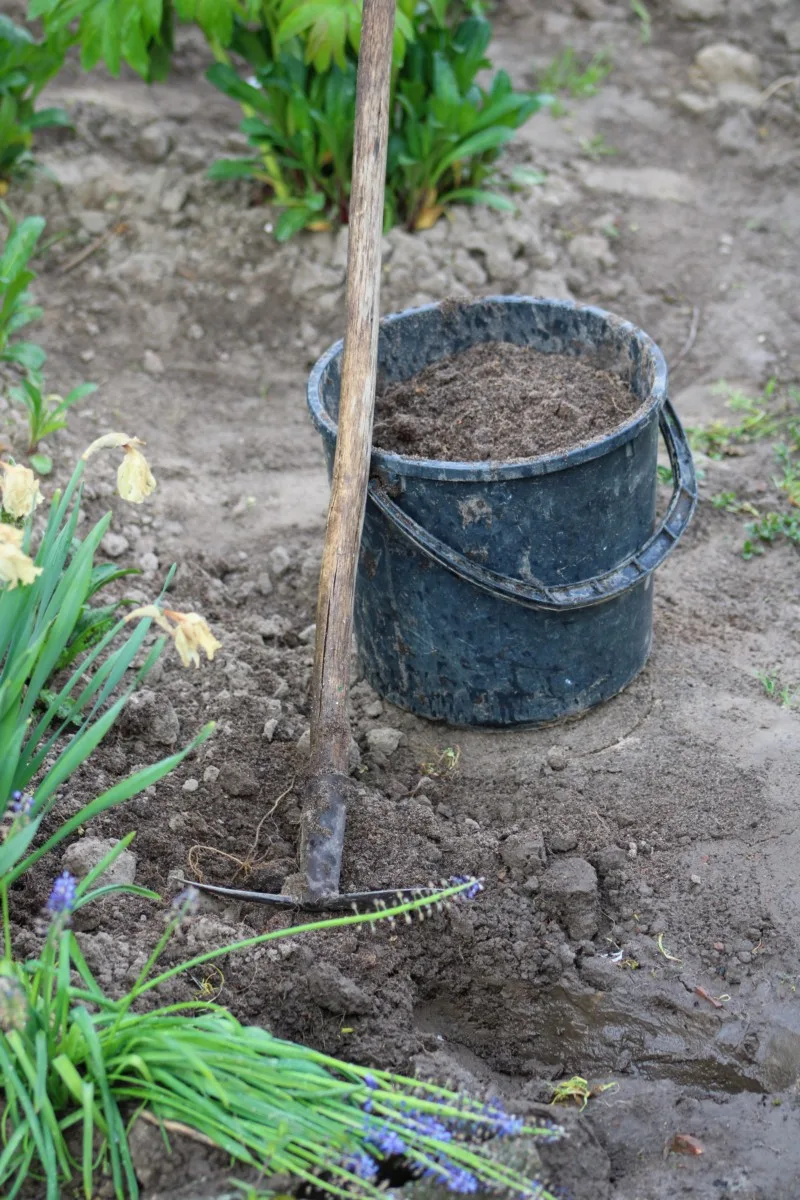
If the soil in your raised bed shrinks down by several inches every year, it may be lacking one very important ingredient: mineral soil.
Topsoils, garden soils, and potting soils sold by the bag often contain very little, if any, actual soil. Filling up the raised bed with 100% soilless media can lead to a few successful harvests, but over time the organic particles will collapse in size as they continue to decompose.
With no soil structure to speak of, the contents of the raised bed can turn into pasty and greasy muck. It won’t drain well, hold on to moisture, or diffuse air.
Topping it up with fresh organic matter annually can get expensive and it won’t fix the underlying issue of shrinking volume.
That’s where mineral soil comes in. Covering most of the Earth’s terrestrial surface, mineral soil is made up of varying proportions of sand, silt, and clay.
Providing some much needed physical structure, mineral soil is inorganic (as in, it won’t decompose) and it gives the raised bed a permanent backbone for organic matter to stick to as it breaks down.
The best source of mineral soil is native soil from your backyard – as long as it’s not contaminated with chemicals or heavy metals. Alternatively, clean mineral soil can be purchased in bulk or by the bag, just make sure what you buy is composed of mostly clay and sand.
To improve soil structure, fill your raised beds with at least 50% mineral soil. Add more than you think you’ll need, as it will settle with rain and time. Leave enough room in the grow box for a minimum of 2 to 4 inches of space for organic amendments.
As the soil settles into its final resting place, you can add more the following year to get it back up to the desired level. The nice thing about mineral soil is it stays put and you won’t have to reapply it year after year.
2. Homemade Compost
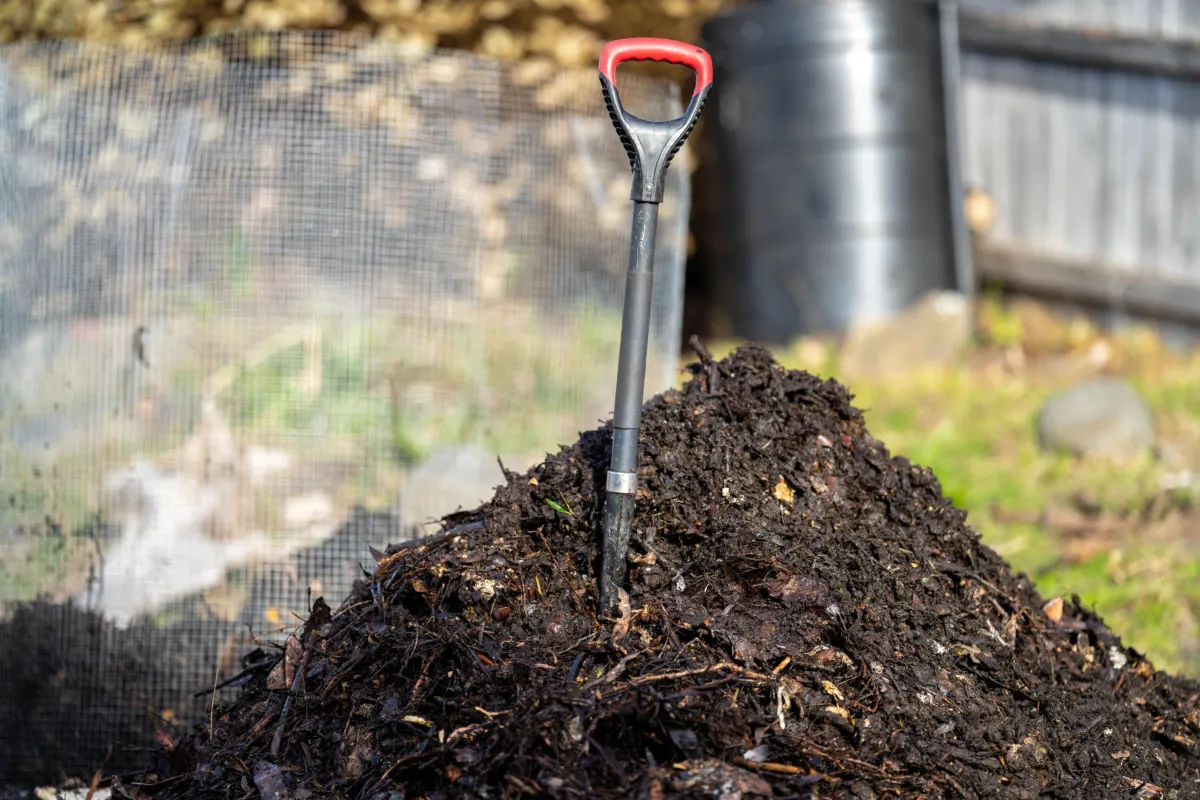
If your soil drops down only a couple inches every year, your raised bed soil has great bones and you can turn your attention to organic amendments.
And the most beloved of all the organic amendments is homemade compost.
As an all-in-one soil improver, compost is a slow release fertilizer that adds a broad spectrum of macro and micronutrients needed for healthy plant growth. It encourages microbial activity in the soil, creating better soil structure that improves drainage and water holding capacity.
You can apply a 1-inch layer over raised beds as general maintenance in autumn to replenish nutrients and bring up the soil level.
In heavily depleted beds, add up to 4 inches of compost.
Read more: Compost 101: Everything You Need to Know to Start a Compost Pile
3. Well-Rotted Livestock Manure
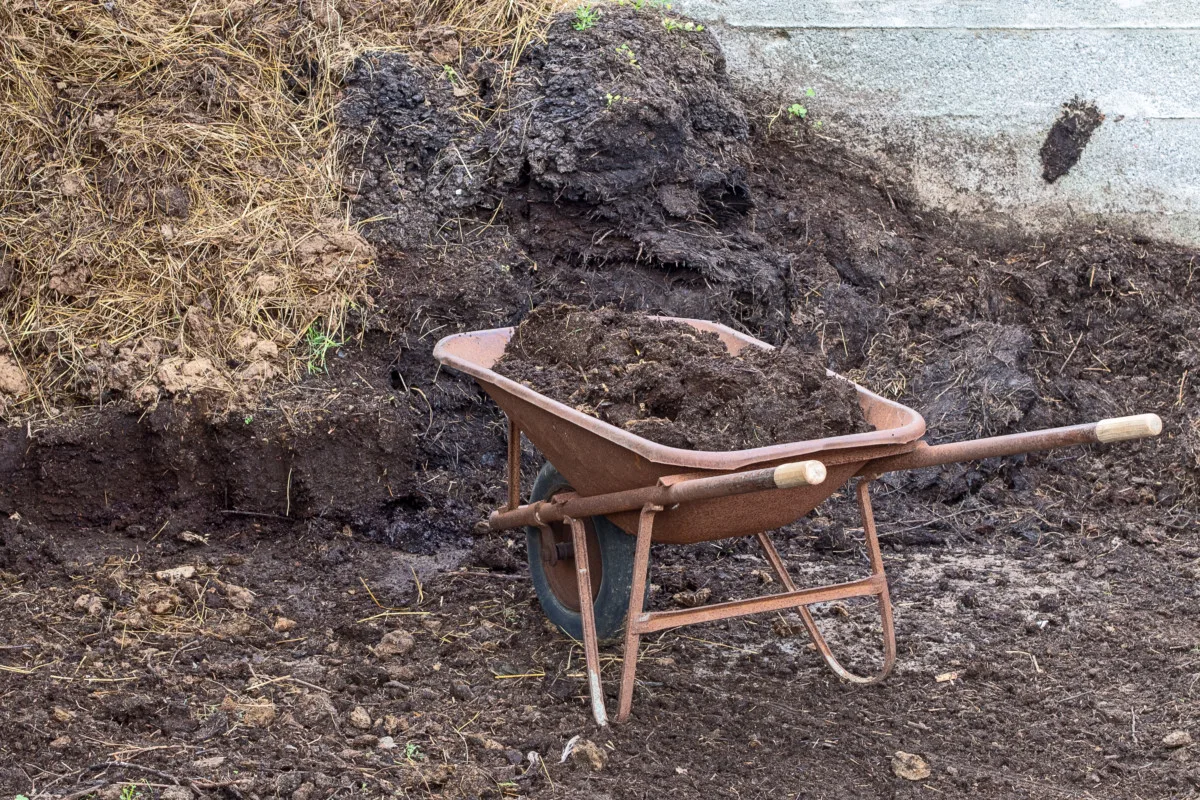
Animal manures are an important part of the earth’s soil food web and have been used for centuries as a natural fertilizer.
Chicken, rabbit, cow, horse, sheep, goat, and other herbivore dungs are a terrific source of nitrogen, phosphorus, and potassium.
Like compost, livestock manures will contribute plenty of organic matter to mineral soil and feed the soil microorganisms that build good soil structure.
Rabbit droppings are the easiest to work with. Rich in nutrients, it’s a cold manure that is gentle enough to be used in the garden right away.
Another good choice is chicken manure, which typically has twice the amount of N-P-K as other livestock. It’s a hot manure that must be composted before it can be safely spread.
Hot animal manures are very high in nitrogen which can burn plant roots, and can contain pathogens and seeds. To ready a fresh pile of animal poop, add carbon-rich materials like wood shavings, dried leaves, and straw.
Keep it moist and turn it over daily to heat it up. Once a high heat of 113°F to 140°F is maintained for several weeks, it will break down and have a soil-like consistency.
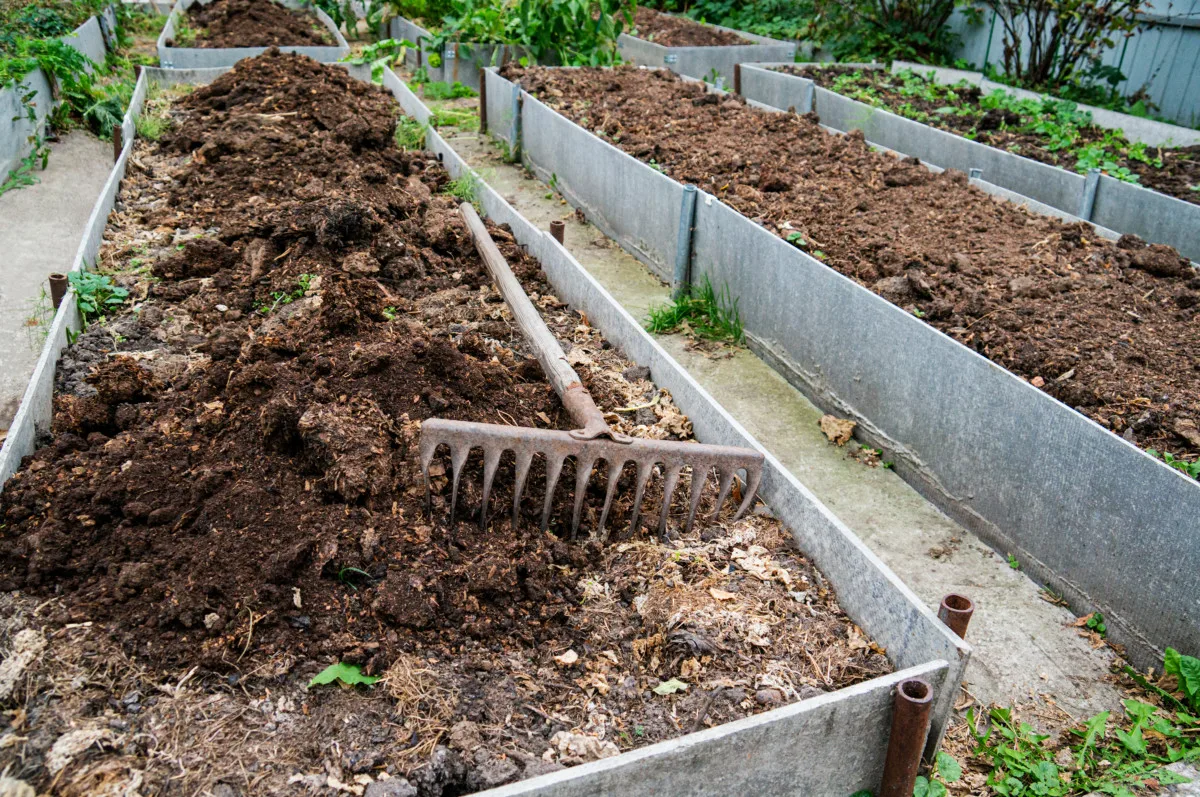
Spread composted manure, 1 to 4 inches deep, in the raised bed in autumn. It will cure in place and be ready for planting by spring
Read more: How to Compost Chicken Manure & Use it in the Garden
4. Biochar
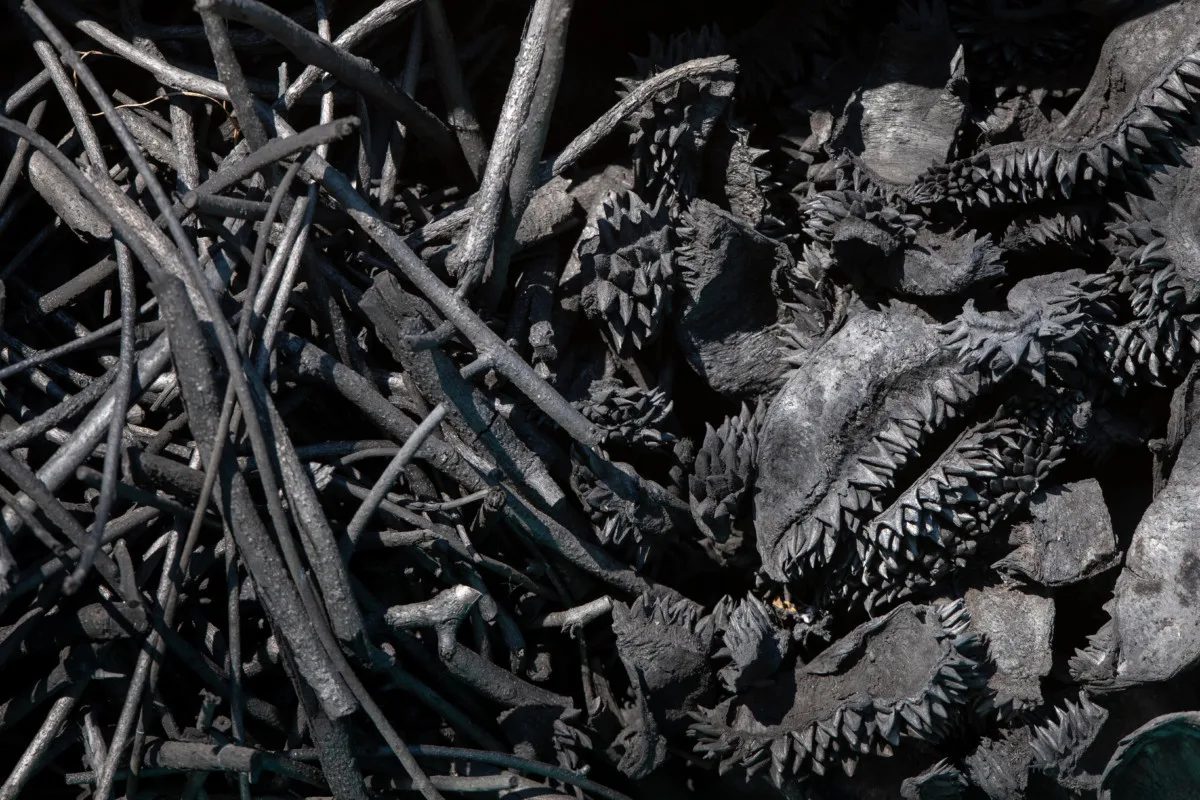
Biochar is excellent for adding both bulk and fertility to your depleted raised beds.
It is created by heating up wood and other plant materials to 400°C to 700°C in the absence of oxygen. The resulting lumpy charcoal has an incredibly porous surface area that wicks up and releases nutrients into the surrounding soil.
Each bump and groove is like a tiny home for billions of microbes to reside.
Before it can be used in the garden, biochar needs to be inoculated with a rich N-P-K fertilizer like compost tea or worm castings. Once it’s charged up, biochar is stable and will endure in soil for a very, very long time.
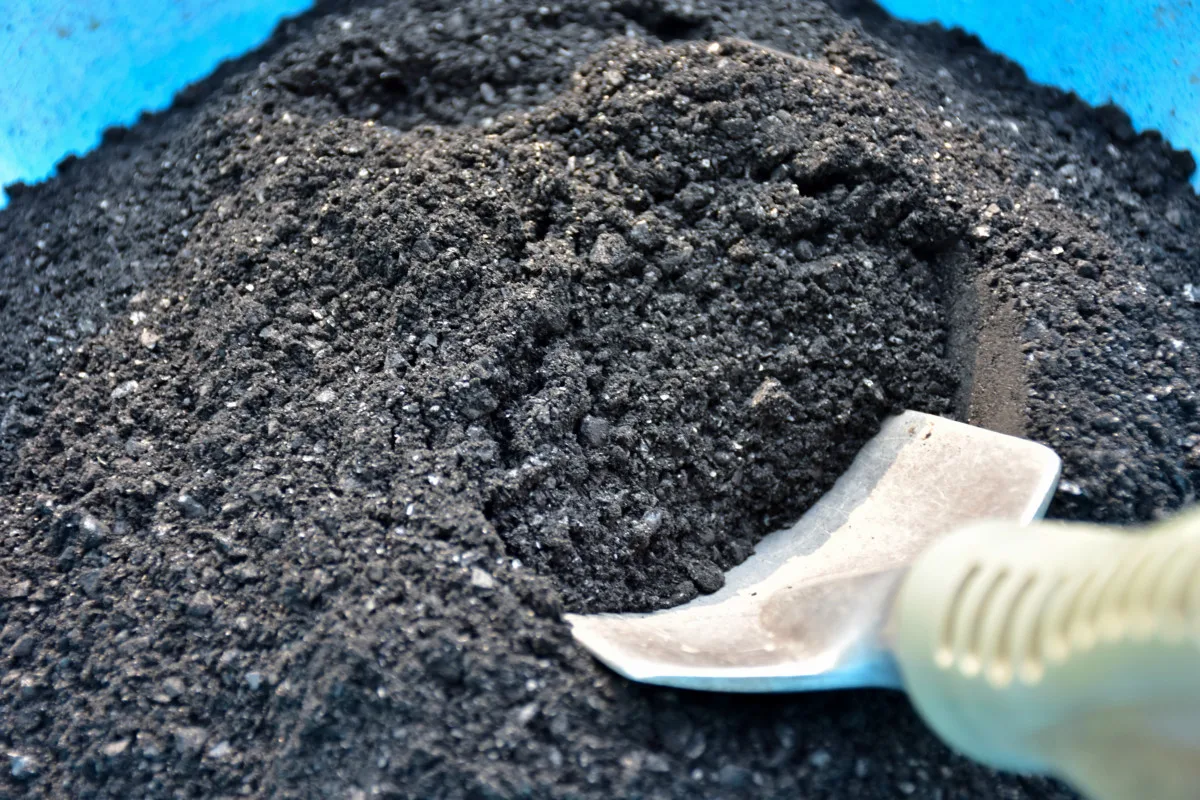
Biochar was originally developed by farmers in the Amazon basin as far back as 450 BC. Then known as terra preta (literally, “black soil”), the treated fields are still there to this day. Somehow, terra preta soils remain fertile thousands of years later, regenerating at a rate of 0.4 of an inch each year.
How biochar retains fertility is something of a mystery. One theory is that, because it absorbs nutrients like a sponge, it drastically reduces leaching and runoff. Another is that terra preta has heightened levels of mycorrhizal fungi that foster improved nutrient exchange in the soil.
Read more: Why Biochar is the Best Thing to Add to Your Soil + How to Make It
5. Leaf Mold
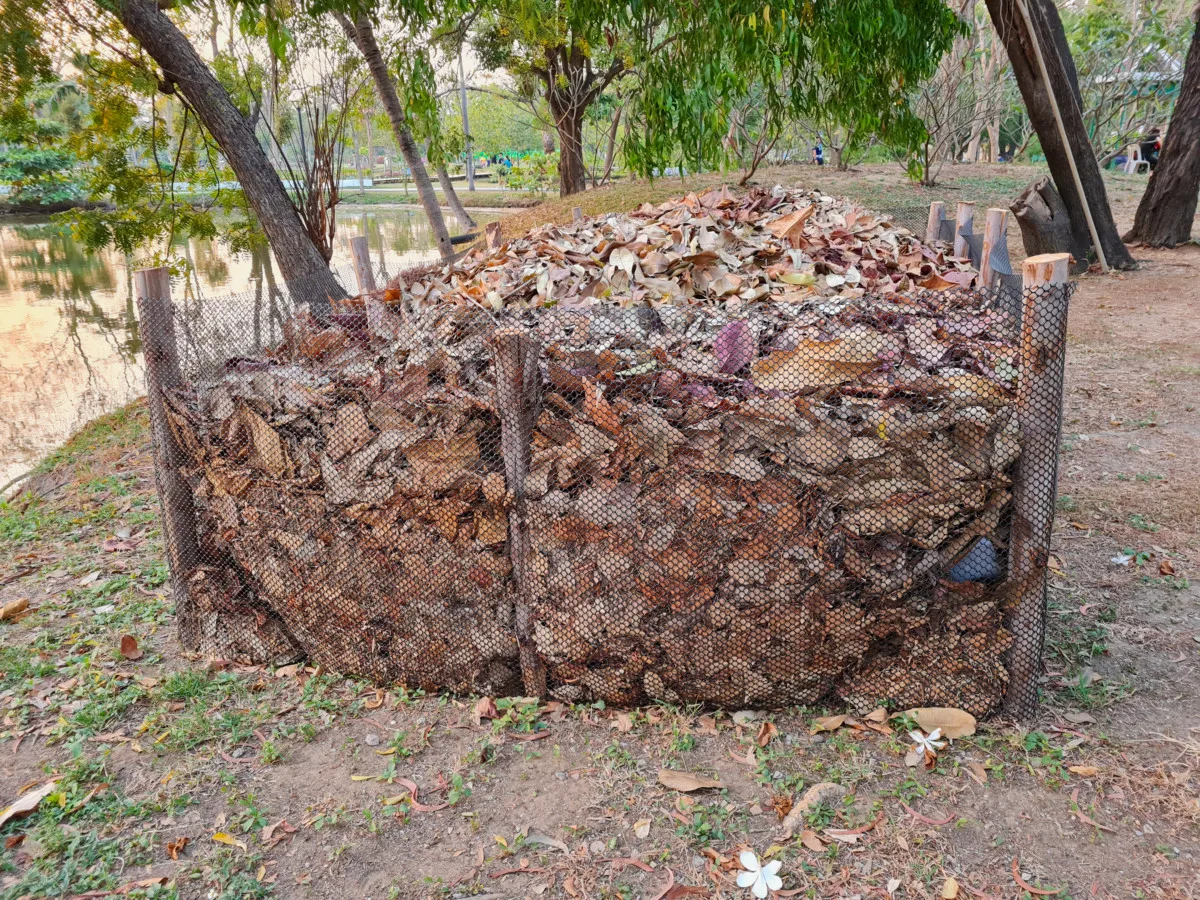
Leaf mold couldn’t be easier to make – just pile up your fallen leaves, moisten the heap, and wait. It will turn into a dark and crumbly humus in 1 to 3 years.
Having a bit of patience pays off in the end, and the resulting leaf compost is a great little renewable material for mulching, conditioning, and amending soils.
Well-rotted leaf mold is high in carbon and low in nitrogen, and contains good amounts of calcium, iron, chlorine, copper, and other secondary nutrients that plants need to grow. Because it’s not a fertilizer per se, it’s best added to raised beds after you’ve already put in your high nutrient amendments.
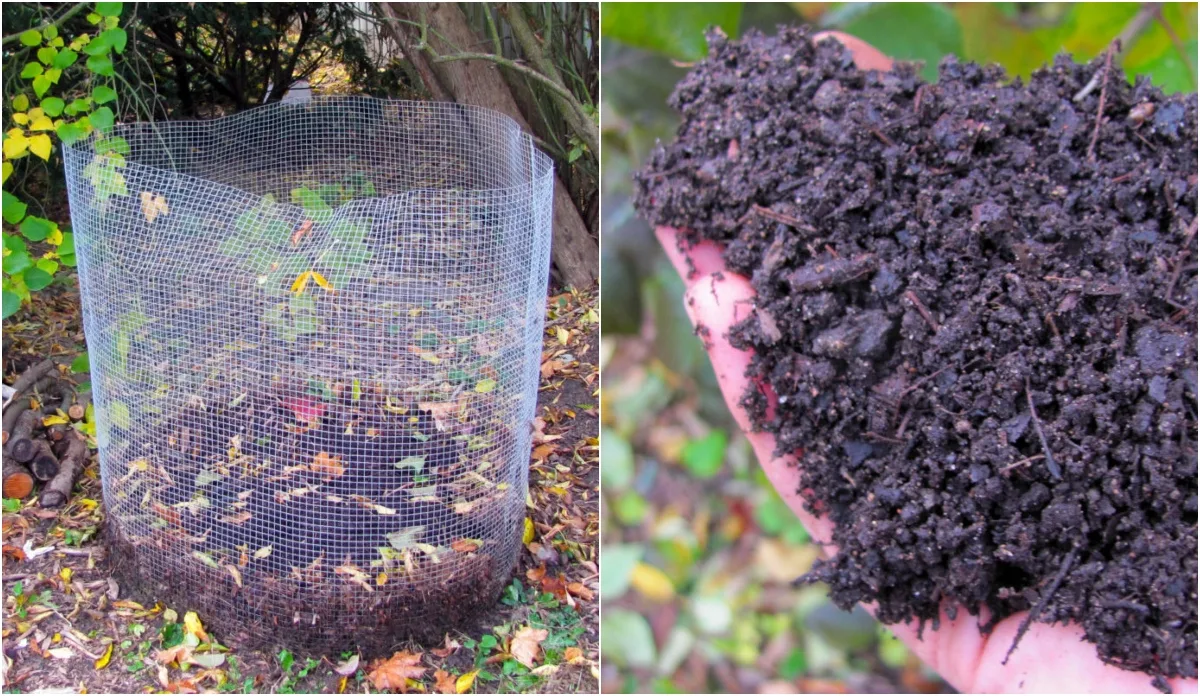
In addition to contributing a little fertility to the mix, leaf mold fixes several soil problems that can crop up in a raised bed. It will assist with drainage, increase the water-holding capacity, and neutralize the pH of poor quality soils. As a rich source of organic matter, it will keep the soil microbes fat and happy as well.
Top off raised beds with a 3-inch layer of leaf mold as nutritious mulch. It will weigh the soil down and protect it from wind and snow. Like a warm blanket, it helps moderate soil temperatures too, protecting the multitude of macro and microorganism that dwell below.
Read more: How to Harvest Leaf Mold & 4 Ways to Use It
6. Green Manures
Cover cropping with green manures accomplishes several things in the winter garden.
Sown in autumn, the plants grow until killed by frost. After the first thaw in spring, they are chopped down and scattered over the soil.
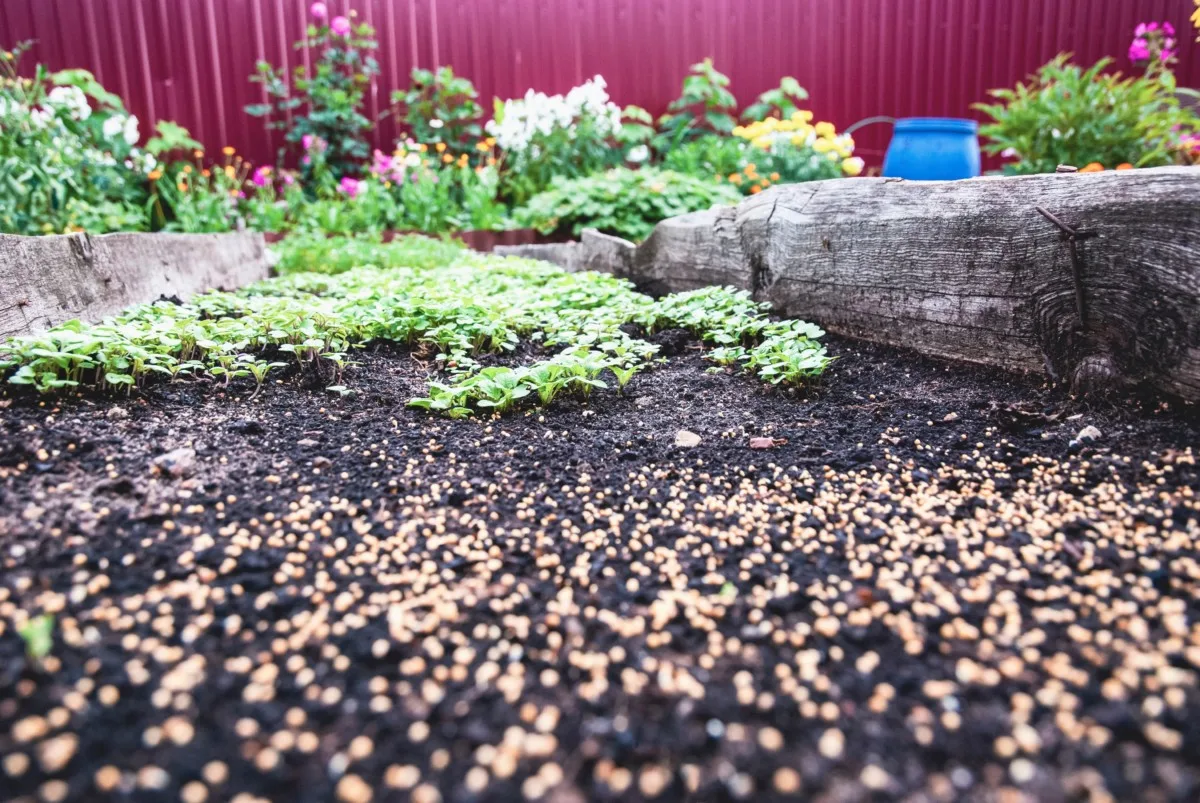
Growing a mix of cold-hardy and nitrogen fixing plants will anchor the soil in place and boost fertility. Like a living mulch, cover crops will also suppress weeds, mediate soil temperatures, balance moisture levels, and provide a habitat for soil microorganisms.
Soil microbes prefer to live very close to living roots. Giving them a place to overwinter will increase their numbers and diversity. The more microbes in the soil, the better the nutrient, energy, and water cycling will be for next year’s crops.
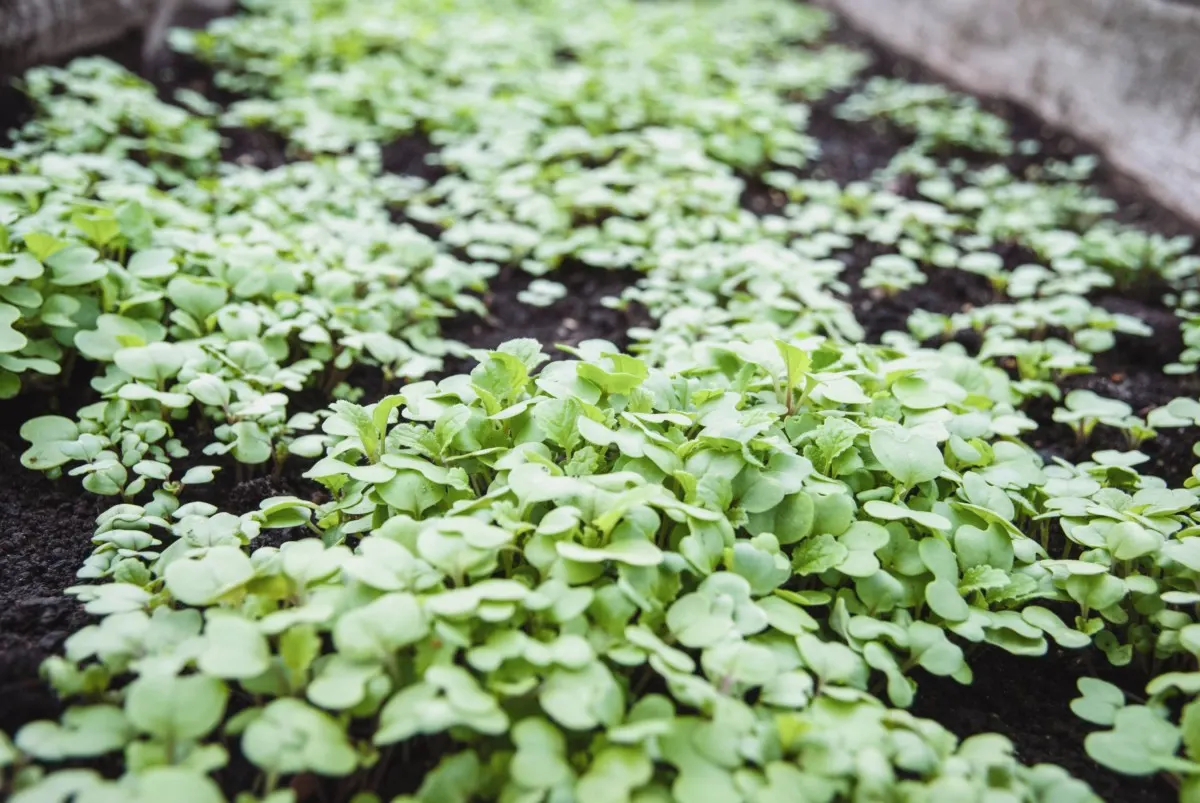
To get the full range of cover cropping benefits, pair up a cool season annual with a legume.
Legumes like crimson clover and winter peas will replenish the soil with nitrogen. Oats, annual rye, and winter wheat will build good soil structure, prevent erosion, and keep the weeds out.
These grains are also nitrogen scavengers that suck up and hold onto nutrients so they stay in the raised bed and don’t get leached away. The nitrogen is held in the plant’s tissues and is released when the plants are cut down and laid over the soil in spring.
Read more: 5 Soil Improving Green Manures for the Winter Months
7. Garden Mulch
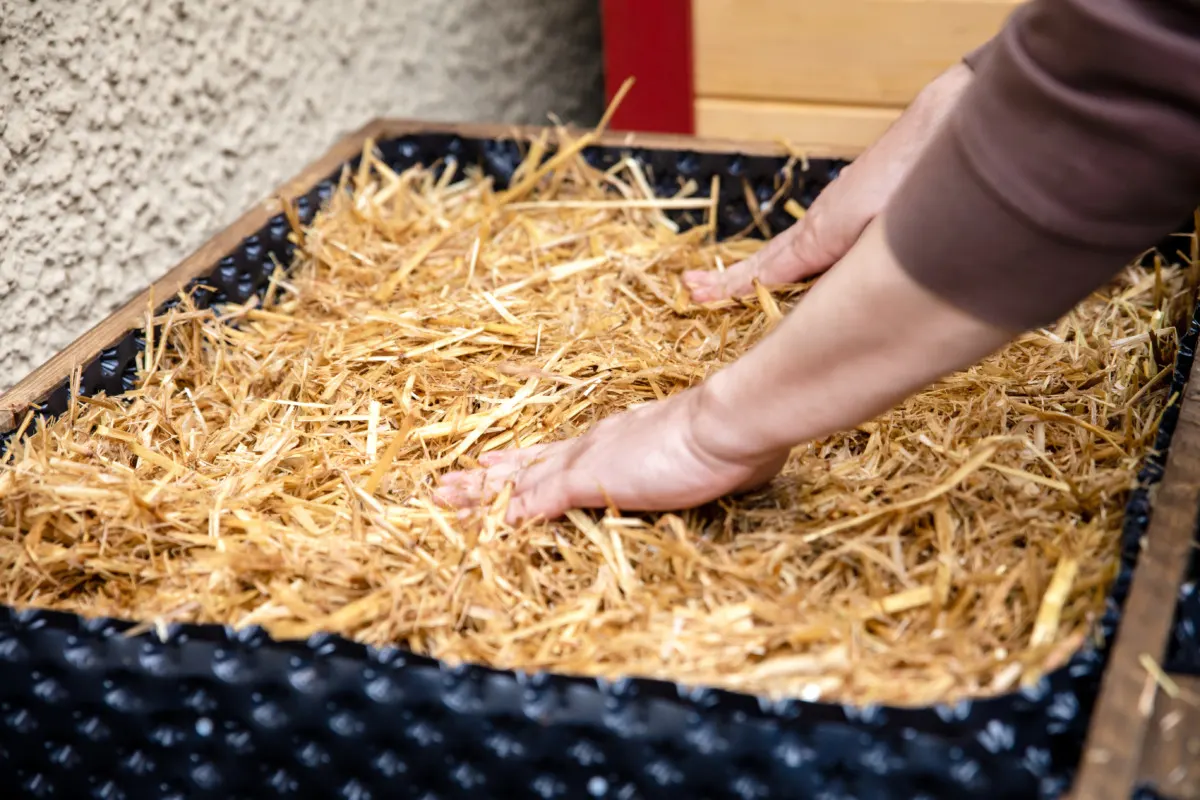
Once your raised beds are topped up and freshly amended, the soil should never be left to sit bare over the winter months.
Applying a generous topdressing of mulch is an essential part of any soil management strategy. It’s the final step in preparing the raised beds for the growing season to come.
Garden mulches can take many forms. Straw and wood chips are classic choices, but you can also use grass clippings, shredded leaves, pine cones, and many other organic waste materials. Even a few layers of cardboard would do in a pinch.
Mulches will preserve the quality of the soil you’ve just worked so hard to create. Think of it as a protective shield that stops weed seeds from sprouting, prevents the soil from compacting and eroding, and keeps the soil warmer through winter.
Spread winter mulches over raised beds to a depth of 3 inches to safeguard the delicate soil microbiome and its inhabitants.
Read more: 19 Types of Garden Mulch & How to Use Them

Get the famous Rural Sprout newsletter delivered to your inbox.
Including Sunday musings from our editor, Tracey, as well as “What’s Up Wednesday” our roundup of what’s in season and new article updates and alerts.

